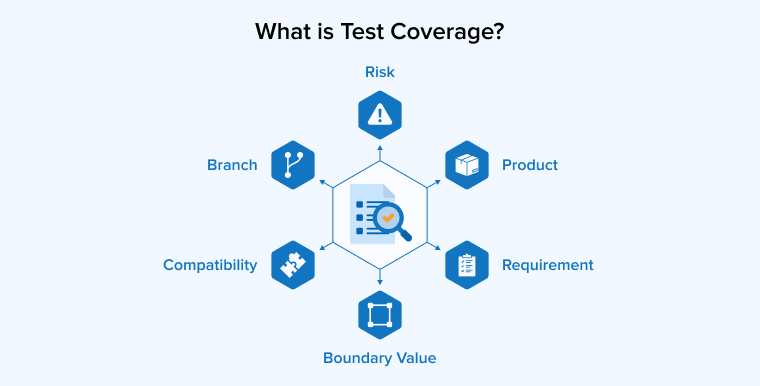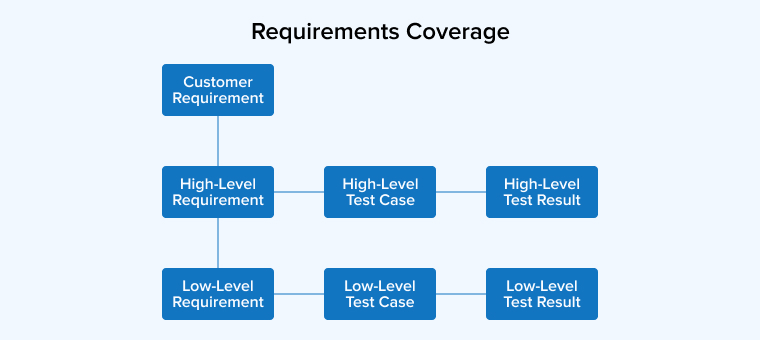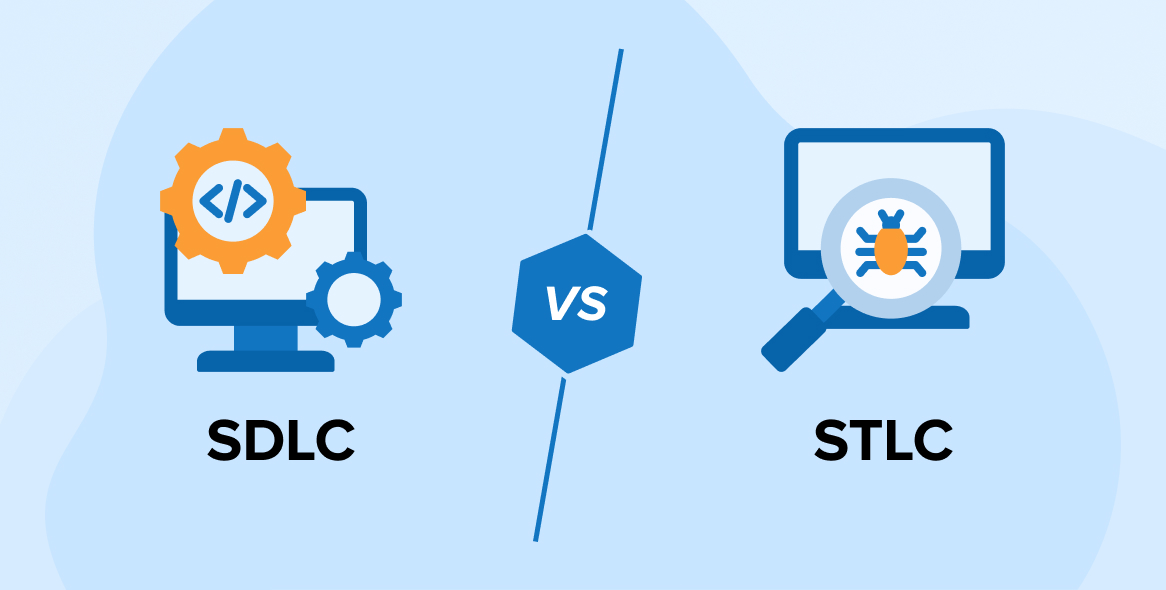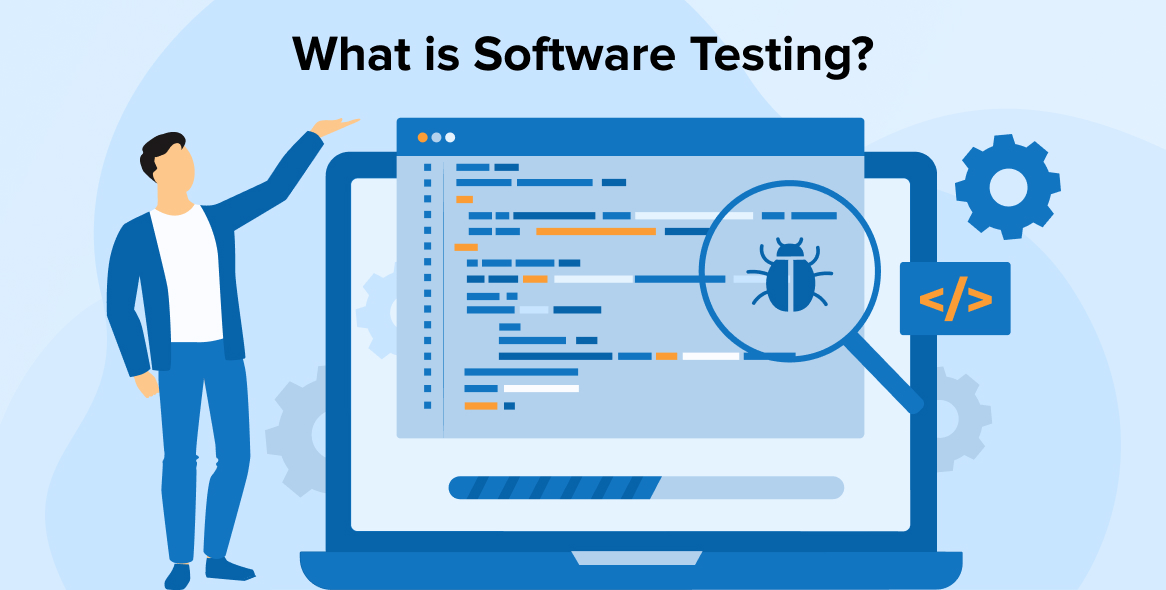
Despite its usefulness, software development comes with mistakes sometimes. Badly designed software not only ruins the user experience but also produces a slew of functional issues.
Good test coverage relies on well-designed, functional products that have been thoroughly tested. It is useful for gauging a product’s overall health. A testing plan can be developed with the use of several test coverage techniques. This manual will teach you the test coverage techniques that are used as part of QA services that are essential for each tester.
1. What is Test Coverage?

A measure used in software testing to determine the extent to which a collection of tests has been executed is known as test coverage. As part of this process, you can expect to collect data on the code sections performed during test suite execution to identify the specific branches of conditional statements.
If you have 10 requirements and 100 tests, and you run 90 of them, you have 90% test coverage. With this measure in hand, testers can create more test cases for the remaining tests.
Put simply, it’s a method for checking whether or not your tests are testing your code, or at least for determining what portion of your code you tested.
1.1 What Does Test Coverage Do?
Test coverage measures how much of your code is exercised by automated tests, helping identify untested parts so you can reduce bugs and improve reliability.
- Test coverage helps to identify the part of a requirement that is missing from a test case collection.
- Assists in the development of supplementary test cases to augment test coverage.
- One indirect way to ensure quality is to find a quantitative way to quantify test coverage.
- Detecting fake test cases that don’t add test coverage.
1.2 Benefits of Test Coverage
Checking your app early and outlining your test coverage have several advantages, which we will examine before diving into the various testing coverage techniques .
- Fewer Resources: Defects in production and user acceptability testing are reduced when test coverage is better. Less money will be available for testing as a result.
- Quick Identification: In the early phases of software development, it aids in finding any mistakes in your program. Finding missing requirements and test cases now will save you a ton of work later on.
- Smoother Testing Cycles: Improving regression testing, prioritizing test cases, augmenting test suites, and minimizing test suites are all aided by test coverage. As a result, the software development life cycle becomes more streamlined and effective.
- Eliminate Redundancy: At times, it is superfluous to think about every single test scenario. To reduce code weight, developers can find and report such repetitive occurrences.
2. How is Code Coverage Differ From Test Coverage?
The extent to which the software code has been executed is measured by code coverage. Not only does it tell you what proportion of code has been run, but it also includes automatic and manual testing. Make the product far more thorough by implementing further testing based on this knowledge.
The main distinction between code coverage and test coverage is that the latter is more concerned with quantitative measurement of testing, while the former is more concerned with qualitative assessment.
Test coverage is useful for outlining test cases that have been created against the requirements document, whereas code coverage helps identify how much of the code is performed when the program is operating.
We will now examine several test coverage techniques.
3. Test Coverage Techniques
You may monitor the efficacy of your tests and address unvalidated regions with the use of the test coverage techniques What follows is an explanation of a few common methods.
3.1 Statement Coverage
To guarantee that every statement in the source code has been tested at least once, the statement test coverage technique is used. Out of all the code blocks, it shows which ones succeeded and which ones failed.
Let’s look at a flow diagram to help us grasp it. All the statements are covered by this path 1A-2C-3D-E-4G-5H in the given example, hence it only takes one test case to cover all the criteria. Every statement is covered by one test case.
In complex code, a single path is not sufficient to cover all the statements. In that case, you need to write multiple test cases to cover all the statements.
Pros:
- Processing source code is not necessary when applying it straight to object code.
- It checks if the code is doing what it should and isn’t.
Cons:
- True circumstances of every assertion are the only ones it covers.
- It fails to notify when the loop reaches its termination.
- The logical operators (|| and &&) do not affect the statement coverage at all.
- Statement coverage is the most basic kind of insurance and does not provide full protection.
3.2 Product Coverage
From the user’s point of view, this method is centered. It includes test cases that look at every conceivable product entry-exit scenario. The if-then-else statement chart and associated conditions are the focus of product coverage, to put it more simply.
The scope of the application is then determined as a result of this approach. The scope of practice can be broadened by the use of practices such as prioritization charts, automation, checklists, etc.
As part of this process, software is tested in different environments and its performance is assessed by,
- Identifying needs and setting priorities.
- Building a set of criteria.
- Implementing excellent test automation.
3.3 Requirements Coverage

To find requirements gaps, testers use requirements coverage. Finding out which software requirements have been tested and which ones haven’t is what requirements coverage is all about. Before testers can accurately evaluate requirements coverage, they must have a clear understanding of what needs to be covered. Included in this category are criteria for functionality, non-functionality, interface, and performance. Test coverage techniques are assigned to each requirement.
The software’s functioning is covered by functional requirements specification. You may utilize equivalence partitioning and boundary value analysis to make sure all the functional criteria are satisfied.
The software’s scalability and dependability, which are not directly related to its functionality, are covered by non-functional requirements. To test these criteria, methods like as load testing and stress testing might be employed.
All aspects of the software’s interaction with its end users are covered by the interface requirements. Methods for evaluating usability and user satisfaction are employed.
The software’s performance is encompassed by performance requirements. Methods for testing load and performance are utilized.
3.4 Boundary Value Coverage
One way to assess input conditions is via Boundary Value Coverage, which is primarily concerned with checking their borders and extreme values. The premise of this method is that outliers, rather than the center of the input range, are the most probable places for mistakes to occur. Data management, validation, and boundary condition problems can be found by testing the boundary values.
When using the Boundary Value Coverage method, it is important to choose test cases that are located on or very close to the input range boundaries. There are usually four types of values included:
- Lower Boundaries: Inputs with the minimum valid value or somewhat below are used in these test cases. Problems in dealing with the lower bounds and boundary conditions can be better identified in this way.
- Upper Boundaries: Inputs that are either at or slightly above the maximum permissible value are used in these test scenarios. Problems in dealing with upper limits and boundary conditions can be better identified in this way.
- Within Boundaries: Example tests where the inputs are not on the extremities of the valid range. By doing so, we can confirm that the system works as expected with common inputs and that its behavior is consistent with expectations.
- Invalid Boundaries: Inputs that are somewhat outside the valid range or include incorrect values are used as test cases. Error warnings, validity checks, and gentle degradation are all ways in which the system deals with erroneous inputs, and this helps to detect them.
Considerations such as complex systems, input ranges, and individual needs determine the number of test cases needed for boundary value coverage.
For each input, a typical method involves choosing test cases for the least valid value, the value just below the minimum, the highest valid value, and the value just above the maximum.
Boundary Value Coverage is a testing strategy that can help you find problems with data processing, boundary conditions, and constraints more easily, which will lead to better software overall.
3.5 Path Coverage
An approach to structural testing known as “path testing” includes traversing an application’s source code in search of every executable path.
Coverage of all paths, beginning to finish, is guaranteed by Path Coverage. There are four potential ways to proceed with this example:
- 1A-2B-E-4F
- 1A-2B-E-4G-5H
- 1A-2C-3D-E-4G-5H
- 1A-2C-3D-E-4F
Pros:
- Redundant testing can be lessened with its support.
- Since it encompasses all statements and branches in the code, path coverage ensures great test coverage.
Cons:
- Due to the exponential growth of the number of pathways concerning the number of branches, testing each path is both difficult and time-consuming. There are a total of 1024 possible outcomes when testing a function using 10 if statements.
- When data linkages make it hard to pursue some options, others become available.
3.6 Decision/Branch Coverage
The proportion of code branches or decision points that have been performed throughout testing is called branch coverage, and it is a metric used in software testing. At a branch, the program’s execution can proceed in one of several possible ways, depending on the circumstances or the choice made.
Aiming to test every potential path and conclusion within the code is the goal of branch coverage. Untested logic or flaws may be lurking in parts of the code that haven’t been tried yet. Increasing trust in the software’s accuracy and dependability is the primary motivation for aiming for high branch coverage.
The testing procedure must keep tabs on which branches have been used during execution to determine branch coverage. Code instrumentation, in which the code is changed to record information about executed branches, or specialized testing tools that can monitor code coverage are two ways to accomplish this. If, during testing, only 8 of a code section’s 10 branches are executed, then the branch coverage is 80%.
3.7 Risk Coverage
Coverage for risks is an essential criterion. This method guarantees that all potential dangers posed by the program under development are covered by the tests. To make sure your tests cover the most essential areas first, it’s vital to identify and prioritize risks.
Among the several approaches to risk assessment, the following stand out as typical:
- Looking into the history of comparable undertakings.
- Analyzing the code for potential broken spots.
- Share your issues with stakeholders in a conversation.
When looking for potential weak spots in software testing, risk coverage is crucial. Once they’ve been identified, testers may zero in on those specific areas and give them the attention they deserve. Additional testing may be necessary in some places, and risk coverage can help pinpoint such regions. For instance, risk coverage may help find and address areas that require attention, such as when new features are added to software without first being adequately tested.
3.8 Compatibility Coverage
A crucial testing coverage approach is compatibility coverage. The main objective of compatibility coverage is to ensure that the program works properly on various operating systems and web browsers. Software must function properly across all of its target platforms and devices, which is why this kind of testing is crucial.
Software compatibility is another important topic for testers to understand. When software isn’t compatible with a given operating system or browser, it might malfunction. While costly and time-consuming, compatibility testing is worthwhile in the end since it guarantees that software will function as expected across all platforms and users.
3.9 Condition Coverage
This test coverage helps verify if each condition has been exercised with both “true” and “false” results. Only when checking the criteria is the decision point’s outcome significant. There are two possible outcomes and two test cases for each condition.
Pros:
- Each condition is assessed separately by condition coverage.
- The control flow is more sensitive to it.
4. Test Coverage Metrics
To answer the question, “How extensively the application was tested?” test coverage metrics quantify the amount of work put into testing. To get these numbers and make test coverage reports, you can use one of several different formulae.
4.1 Code Testing Metrics
First and foremost, we have a test execution rate. This metric quantifies the proportion of test cases that were performed out of all the test cases.
- Let N be the total number of tests run.
- Consider M to be the total number of tests that need to be run.
Calculating the pace of test implementation is as follows:
- Percentage of Test Execution Coverage = (N / M) * 100
The main benefit is that you can see exactly how many test cases succeeded and failed, which gives you a good idea of how the testing process is going. One big drawback is that passing test cases doesn’t guarantee that the tests were good.
4.2 Data Testing Metrics
The relationship between testing conditions and application components is established by this metric. By modifying a test case or application component, for instance, you may observe the ripple effect on other areas of the program through the usage of data metrics.
The requirement coverage rate is one measure used in data testing. The number of requirements covered by the test cases is determined by it. A project’s, sprint’s, or release’s requirement coverage rate may be determined by dividing the number of requirements completed by the total number of requirements that must be met within that time.
- Take P as the total number of conditions fulfilled.
- A total of Q needs is to be considered.
- Rate of Requirement Coverage = (P / Q) * 100
In this step, you may connect requirements with tests, and test case coverage will tell you how changes to either the tests or the requirements will affect the whole.
4.3 Application Testing Metrics
One statistic used in application testing is defect density. It is a metric for determining the overall amount of software defects relative to the size of the entity.
Defect density can be expressed as a formula:
The number of known faults divided by software entity size is the defect density.
Locating this indicator can help you determine which processes may benefit from automation. A larger fault density indicates that retesting of that capability is necessary. One way to streamline retesting is by automating test cases for known faults.
5. Test Coverage Best Practices
In order to meet the quality barrier, testers should adhere to some frequently suggested methods. Depending on the type of application, objectives, specifications, etc., these could change. Test coverage will probably improve if you grasp the fundamental concept. The following are examples of best practices:
- Remember to Include Updates: Test Coverage has to have a scope that includes the updates/changes the product will undergo; this is something that testers often forget. For easy change recognition, 90% test coverage is recommended.
- Automation is Essential: Automating as much as possible, regardless of how much it costs, is essential. For critical, time-sensitive test scenarios, AI automation is an absolute need.
- Say No to Redundancy: The harm caused by needless data duplication is more than it first appears. It wastes money and, indirectly or directly, lowers the quality of the test coverage as a whole. Finding and fixing bugs in the code becomes much more of a chore when test suites are duplicated.
- Prioritizing Quality Over Quantity: Historically, quality has triumphed over quantity. Eliminating glitches, errors, and faults from high-priority and risk-prone components is the primary issue, even from the clients’ point of view. Instead of having a wide and unclear scope of coverage, it is better to execute well-thought-out test coverage on a few high-priority test components.
- Perform Multi-degree Testing: It is critical to incorporate test cases into the code at every level. There are three tiers to the testing process: unit testing, integration testing, and system.
6. Conclusion
The topic of testing coverage encompasses a great deal of other considerations. Increasing the number of tests does not necessarily lead to improved outcomes. Indeed, you are likely to spend a considerable amount of time when you experiment more without a clear test plan.
You may avoid sacrificing quality by adopting a more organized approach, striving for 100% requirement coverage, and using effective testing methods.
Hopefully, you may find some useful information in the methods described in this article.
FAQs
What is good test coverage?
A good test coverage range is between 70-80%.
What is test coverage in automation testing?
In automated testing, test coverage indicates whether all application code has been tested.
How can I improve my test coverage?
- Strategizing for efficient automation.
- Selecting an appropriate automation platform and tool set.
- Picking out appropriate test data.
- Dedicated to doing routine assessments.
- Organizing the correct upkeep and cleaning of tests.
- The correct browser metrics should be used.
- Working together in tandem.
How do we measure test coverage?
To determine the extent to which your tests cover a software program, divide the total number of lines by the number of lines that each test covers.






Comments
Leave a message...